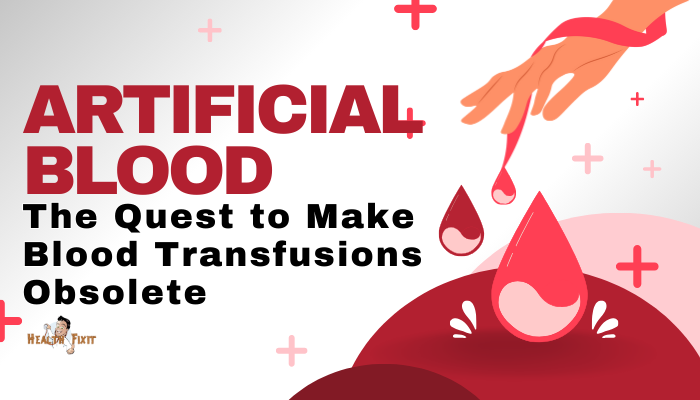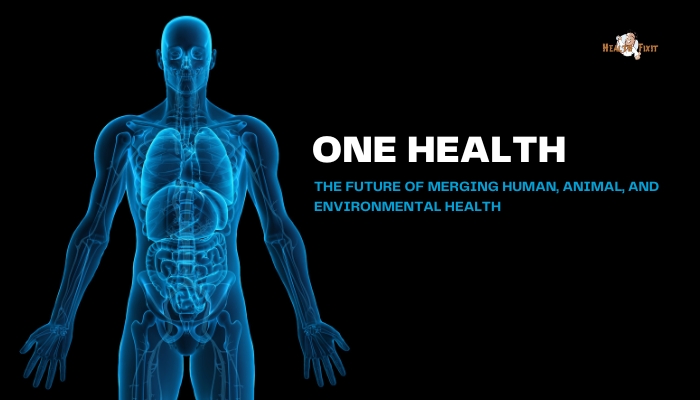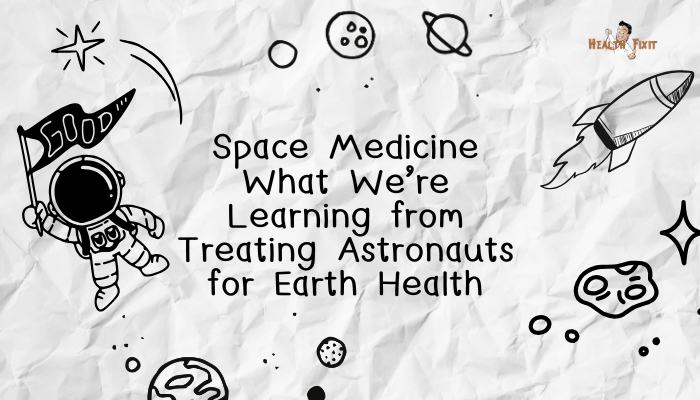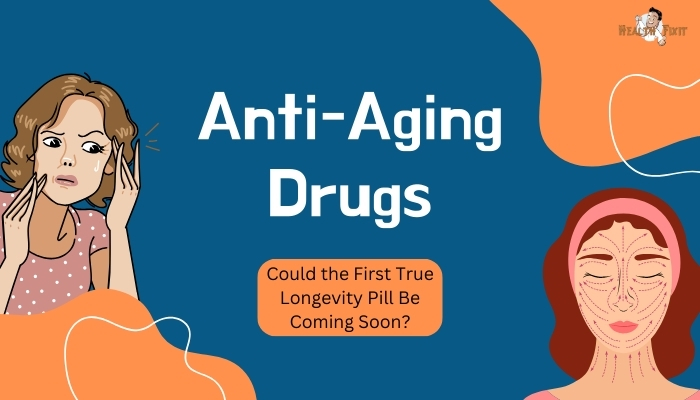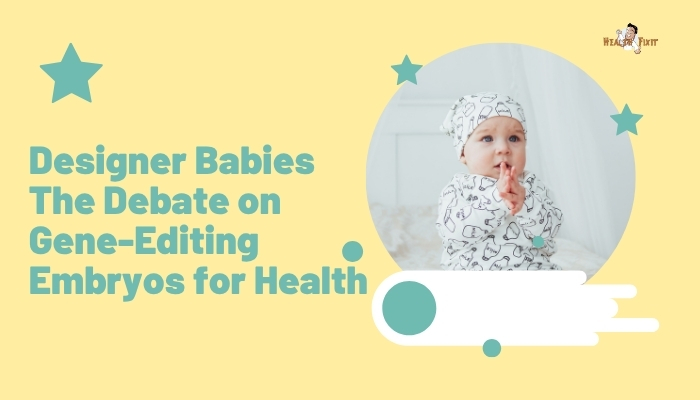Introduction
Blood transfusions save millions of lives each year. Patients with severe blood loss or chronic conditions often rely on donated blood. However, donor blood can be scarce, must be type-matched, and carries infection risks.
Meanwhile, properly storing and transporting blood is costly and difficult, especially in low-resource settings or disaster zones.
To address these challenges, researchers have sought a practical “artificial blood” or “blood substitute” for decades.
Such a product, also known as an “oxygen therapeutic,” would carry oxygen to tissues much like red blood cells (RBCs) do, without the limitations of real blood. If scientists succeed, emergency medicine would never be the same.
This article discusses the history of blood substitutes, leading research approaches, technical obstacles, and the future prospects for an off-the-shelf product that reduces our reliance on donated blood.
Why Pursue Artificial Blood?
- Donor Shortages
- Many regions face chronic shortfalls in the blood supply. Donated blood has a limited shelf life, typically around 35–42 days.
- In emergencies, trauma cases can deplete local stocks quickly.
- Disease Transmission
- While donor screening is rigorous, risks of infections (e.g., HIV, hepatitis) and immunologic reactions remain, especially in regions with less robust screening.
- Blood Type Matching
- Not all blood types are readily available. Mismatched transfusions can provoke life-threatening immune responses.
- Military and Disaster Needs
- In remote or battlefield conditions, stored blood may be difficult to transport or maintain at safe temperatures.
- Chronic Conditions
- Patients with sickle cell disease, thalassemia, or other disorders often require repeated transfusions. Artificial blood could ease dependence on donors.
A universally compatible, room-temperature-stable, infection-free blood substitute would solve many of these issues. It could also revolutionize medical care in rural clinics and emergency zones worldwide.
What Is Artificial Blood?
Artificial blood, or a blood substitute, is not necessarily a full replacement for all blood components. Instead, researchers focus on mimicking red blood cells’ key function—carrying oxygen from the lungs to tissues.
Human blood has multiple components:
- Red Blood Cells (RBCs): Contain hemoglobin that binds oxygen.
- White Blood Cells: Fight infection.
- Platelets: Help with clotting.
- Plasma: Contains proteins, hormones, and other vital molecules.
Most “artificial blood” efforts aim at replicating or substituting RBCs’ oxygen-transport function. Additional roles—like immunity and clotting—generally require conventional transfusions or specialized products.
Two Main Approaches: Hb-Based vs. PFC-Based
Researchers have pursued two principal strategies to develop a functional oxygen carrier:
Hemoglobin-Based Oxygen Carriers (HBOCs)
- Modified Hemoglobin: Some products extract hemoglobin from human or bovine RBCs, then chemically modify it to reduce toxicity and extend shelf life.
- Recombinant Hemoglobin: Advances allow producing hemoglobin in genetically engineered bacteria or yeast. This synthetic hemoglobin can be refined and stabilized.
- Encapsulation: Putting purified hemoglobin inside artificial membranes or nanocapsules reduces unwanted side effects like oxidative damage.
Pros: Hemoglobin is the body’s natural oxygen carrier, so these products can deliver oxygen effectively. They do not require RBC donors, eliminating ABO compatibility issues.
Cons: Free hemoglobin outside RBCs can cause side effects, such as vasoconstriction, oxidative stress, and kidney damage. Overcoming these toxicities requires complex modifications or encapsulation. Several HBOC trials in the past encountered adverse events that stalled development.
Perfluorocarbon (PFC) Emulsions
- PFC Molecules: These synthetic fluorinated hydrocarbons can dissolve large amounts of oxygen and carbon dioxide.
- Emulsion Form: PFCs are immiscible with blood, so they must be emulsified with surfactants to remain suspended.
- Oxygen Loading: PFCs pick up oxygen in the lungs and release it to tissues. They have been studied for partial liquid ventilation and as blood substitutes.
Pros: PFCs are chemically inert, easy to sterilize, and highly stable. They do not rely on hemoglobin, avoiding free hemoglobin toxicity.
Cons: PFCs typically carry less oxygen by volume than RBCs or HBOCs. They also require patients to breathe high concentrations of oxygen to be effective. Excess PFC may cause side effects like flu-like symptoms or accumulation in tissues.
History and Setbacks
Efforts to create blood substitutes date to the 19th century. Early attempts with animal or plant fluids often failed catastrophically, causing major health complications. In the 1970s and 1980s, developers introduced more sophisticated approaches:
- Fluosol-DA: A PFC-based product once approved for limited use (e.g., for Jehovah’s Witness patients who refuse blood). Its complexity and modest oxygen delivery limited its adoption.
- PolyHeme, HemAssist, Hemopure: Hemoglobin-based therapies advanced to clinical trials. Some trials showed increased adverse cardiovascular events, leading the FDA to withhold broad approval.
These setbacks slowed progress. However, better engineering and gene-editing tools revived interest in making safer, more efficient artificial blood.
Current Research and Emerging Products
Next-Generation HBOCs
Recent advances include:
- Polymerized or Pegylated Hemoglobin: Attaching hemoglobin molecules to polymers or PEG reduces toxicity and extends circulatory half-life.
- Enzyme Treatments: Removing 2,3-BPG or other RBC modulators to control hemoglobin’s oxygen affinity.
- Antioxidant Strategies: Incorporating antioxidants or co-encapsulating with protective enzymes (e.g., catalase) to manage oxidative stress.
Some companies claim to have reduced or eliminated side effects once seen in earlier trials. Ongoing studies measure these new formulations’ performance in trauma or surgical blood loss.
Engineered RBCs
Another concept is synthetic RBCs made from biodegradable polymers or RBC membranes, loaded with hemoglobin or other cargo. These RBC “mimics” approximate the shape and flexibility of real red blood cells, potentially improving circulation in small vessels. Initial lab and animal tests appear promising, though manufacturing these artificial RBCs at scale is challenging.
Improved PFCs
Researchers refine PFC emulsions to reduce side effects, enhance stability, and boost oxygen capacity. Some next-gen PFCs combine with nanotechnology to improve the half-life in circulation. The goal is to produce a stable infusion that effectively shuttles oxygen under normal air breathing conditions.
Potential Benefits of Artificial Blood
- Universal Compatibility
- No ABO blood group matching needed. This saves time in trauma care, reduces risk of hemolytic transfusion reactions, and speeds emergency interventions.
- No ABO blood group matching needed. This saves time in trauma care, reduces risk of hemolytic transfusion reactions, and speeds emergency interventions.
- Long Shelf Life
- Many products can be stored at room temperature for months or even years, lowering storage costs.
- Ideal for military or remote settings where refrigeration is difficult.
- Rapid Availability
- Hospitals could stockpile or restock artificial blood easily. In mass casualty events, supply would be less constrained by donations.
- Hospitals could stockpile or restock artificial blood easily. In mass casualty events, supply would be less constrained by donations.
- Disease-Free
- No risk of transmitting HIV, hepatitis, or emerging infections. Production and sterilization can ensure consistency.
- No risk of transmitting HIV, hepatitis, or emerging infections. Production and sterilization can ensure consistency.
- Targeted Use
- Because these products only replace RBC function, they might be best used in trauma or acute blood loss situations where oxygen transport is the main goal. Platelets and clotting factors might still be supplemented as needed.
- Because these products only replace RBC function, they might be best used in trauma or acute blood loss situations where oxygen transport is the main goal. Platelets and clotting factors might still be supplemented as needed.
Key Obstacles and Considerations
Safety Profile
- Blood Pressure Effects: Some HBOCs cause vasoconstriction and hypertension by scavenging nitric oxide, leading to organ stress.
- Oxidative Stress: Free hemoglobin easily forms methemoglobin or releases iron, damaging tissues.
- Immunogenicity: Repeated use could provoke immune responses. Minimizing changes in RBC structure is crucial.
Oxygen Delivery Efficacy
- Hemoglobin Affinity: The artificial carrier must release oxygen at tissue-level partial pressures, not cling to it too strongly or too weakly.
- Flow Dynamics: RBC shape and deformability help them navigate tiny capillaries. A fluid-based substitute might behave differently, potentially affecting microcirculation.
Regulatory Path
- Large Clinical Trials: The FDA and other agencies demand extensive phase II/III trials to demonstrate non-inferiority or superiority to standard transfusions.
- Niche vs. Broad Use: Early approvals might focus on specific scenarios (e.g., emergency trauma, disease restrictions on transfusions) before mainstream adoption.
Future Directions
Despite past disappointments, the artificial blood field is far from stagnant. Scientists leverage breakthroughs in:
- Genetic Engineering
- Potential for recombinant hemoglobin with carefully tuned oxygen kinetics.
- New expressions systems in plants or microbes to produce safer, cheaper hemoglobin.
- Nanobiotechnology
- Nanocarriers can hold hemoglobin or PFC while regulating release of oxygen, limiting direct contact with tissues.
- Smart materials might sense local oxygen demand and adjust release accordingly.
- Clinical Integration
- Next trials likely revolve around controlled surgical settings or emergency trauma.
- Partnerships with defense departments or remote healthcare providers to test reliability outside standard hospital environments.
- Hybrid Approaches
- Combining RBC mimics with platelets or clotting factors to create a more comprehensive “blood-like” product. This might address hemorrhagic shock more fully.
If these lines of research succeed, artificial blood could become a staple in operating rooms and ambulances worldwide, drastically reducing dependence on donor supplies.
Implications for Healthcare
Reducing Transfusion Errors
Mislabeling and ABO incompatibility cause transfusion-related fatalities yearly. A universal artificial blood would sidestep these errors, boosting patient safety.
Military and Disaster Relief
Battlefields, remote outposts, and disaster zones often cannot store large volumes of donated blood. A stable synthetic product would ensure immediate lifesaving care without relying on local donor drives.
Medical Missions
Organizational missions in low-income countries struggle to supply safe blood. Artificial blood could become a game-changer for routine surgeries or maternal hemorrhage management in resource-poor areas.
Chronic Conditions
Patients needing frequent transfusions could benefit if artificial blood proves safe over repeated doses. It would reduce immunological complications and free up donor blood for more specialized uses.
Conclusion
Artificial blood holds immense promise for medicine. Ideal substitutes would be universal, sterile, and stable, with minimal side effects and robust oxygen delivery.
Yet the journey to realize a safe, effective, and commercially viable product has been marked by setbacks.
Despite these hurdles, ongoing progress in hemoglobin modification, PFC development, and nanoparticle technologies suggests that “blood transfusions as we know them” may indeed become obsolete for certain indications in the coming years.
For now, donated blood remains essential for routine and emergency transfusions. However, as researchers refine artificial blood products through carefully controlled clinical trials,
we may see them gradually introduced for trauma, surgery, and other critical situations where speed and universal compatibility matter most.
If successful, these innovations could save countless lives, particularly in remote or crisis settings, and ultimately revolutionize how healthcare systems manage blood shortages around the world.
References
- Winslow RM. Current status of oxygen carriers (‘blood substitutes’): 2021 update. Expert Opin Biol Ther. 2021;21(12):1607–1620.
- Chang TM. Blood substitutes based on nanobiotechnology: current status and future outlook. Curr Hematol Rep. 2002;1(6):465–472.
- Jahr JS, Sadighi A, Doherty L, Li A, Kim HW. Hemoglobin-based oxygen carriers: history, limits, scope for improvement, and future. Curr Opin Anesthesiol. 2021;34(2):251–258.
- Rameez S, Bachelder EM, Dawson E, Rice-Ficht A, Bhojani MS. Soft matter approaches to oxygen carriers. Soft Matter. 2020;16(41):9297–9318.
- Spahn DR, Mosca A, Stein P, Hess JR, Rossaint R. Management of bleeding and coagulopathy in trauma: towards patient-specific therapy and diagnostics. Crit Care. 2020;24(1):683.
- Tsai AG, Cabrales P, Intaglietta M. Oxygen therapeutics: can we tame haemoglobin? Nat Rev Drug Discov. 2002;1(3):239–252.
- Varnado CL, Mollan TL, Birukou I, Smith BJ, Henderson DP, Olson JS. Development of recombinant hemoglobin-based oxygen carriers. Antioxid Redox Signal. 2013;18(17):2314–2328.
- Gunther S, Dragnevski K, Grandy-Smith S, Davis R. Perfluorocarbon-based oxygen carriers: progress and perspectives for clinical applications. Expert Opin Biol Ther. 2022;22(6):701–715.
- Kim HW, Greenburg AG. Artificial oxygen carriers as red blood cell substitutes: a select history and current status. Artif Organs. 2021;45(9):952–958.
- Moore EE, Moore HB, Kornblith LZ, Neal MD, Hoffman M. Trauma-induced coagulopathy. Nat Rev Dis Primers. 2021;7(1):30.

